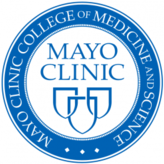
Migraine is a genetically influenced complex neurological disorder characterized by episodes of moderate-to-severe headache, most often unilateral and generally associated with nausea and light and sound sensitivity. Other characterizing symptoms may include vomiting, cognitive dysfunction, allodynia, and dizziness. Exacerbation of headache symptoms during physical activity is another distinguishing feature. Up to one-third of migraine sufferers experience aura, a premonitory period of sensory disturbance widely accepted to be caused by cortical spreading depression at the onset of a migraine attack. Although primarily considered to be a headache disorder, migraine is highly heterogenous in its clinical presentation and is better thought of as a spectrum disease rather than a distinct clinical entity. Disease burden can range from episodic discrete attacks to chronic disease.

Headache, also known as cephalalgia, is the symptom of pain in the face, head, or neck. It can occur as a migraine, tension-type headache, or cluster headache. There is an increased risk of depression in those with severe headaches.

Cluster headache is a neurological disorder characterized by recurrent severe headaches on one side of the head, typically around the eye(s). There is often accompanying eye watering, nasal congestion, or swelling around the eye on the affected side. These symptoms typically last 15 minutes to 3 hours. Attacks often occur in clusters which typically last for weeks or months and occasionally more than a year.
A medication overuse headache (MOH), also known as a rebound headache, usually occurs when painkillers are taken frequently to relieve headaches. These cases are often referred to as painkiller headaches. Rebound headaches frequently occur daily, can be very painful and are a common cause of chronic daily headache. They typically occur in patients with an underlying headache disorder such as migraine or tension-type headache that "transforms" over time from an episodic condition to chronic daily headache due to excessive intake of acute headache relief medications. MOH is a serious, disabling and well-characterized disorder, which represents a worldwide problem and is now considered the third-most prevalent type of headache. The proportion of patients in the population with Chronic Daily Headache (CDH) who overuse acute medications ranges from 18% to 33%. The prevalence of medication overuse headache (MOH) varies depending on the population studied and diagnostic criteria used. However, it is estimated that MOH affects approximately 1-2% of the general population, but its relative frequency is much higher in secondary and tertiary care.

Sumatriptan, sold under the brand name Imitrex among others, is a medication used to treat migraine headaches and cluster headaches. It is taken orally, intranasally, or by subcutaneous injection. Therapeutic effects generally occur within three hours.

Triptans are a family of tryptamine-based drugs used as abortive medication in the treatment of migraines and cluster headaches. This drug class was first commercially introduced in the 1990s. While effective at treating individual headaches, they do not provide preventive treatment and are not considered a cure. They are not effective for the treatment of tension–type headache, except in persons who also experience migraines. Triptans do not relieve other kinds of pain.
Chronic paroxysmal hemicrania (CPH) is a severe debilitating unilateral headache usually affecting the area around the eye. It normally consists of multiple severe, yet short, headache attacks affecting only one side of the cranium. Retrospective surveys indicated that paroxysmal hemicrania was more common in women. However, subsequent prospective research showed an equal prevalence between females and males, with a ratio close to 1:1. Unlike in migraine, it has no neurological symptoms associated with it. CPH headaches are treated through the use of non-steroidal anti-inflammatory drugs, with indomethacin found to be especially effective in eliminating symptoms.
The Nociceptive trigeminal inhibition tension suppression system, is a type of occlusal splint that is claimed to prevent headache and migraine by reducing sleep bruxism. Sleep bruxism is purported to lead to a hyperactivity of the trigeminal nerve, often triggering typical migraine events. The hyperactivity of trigeminal neurons during trigemino-nociceptive stimulation is a proposed cause of migraine and is correlated with imaging of migraine sufferers. The objective of the NTI-TSS is to relax the muscles involved in clenching and bruxing, thus supposedly diminishing the chances for migraines and tension headaches to develop through the reduction in nociceptive stimulation normally caused by parafunctional activity. It is sometimes used for temporomandibular joint dysfunction (TMD).

The Mayo Clinic College of Medicine and Science (MCCMS), formerly known as Mayo Clinic College of Medicine (MCCM), is a private postgraduate-only research university based in Rochester, Minnesota, United States that trains physicians, scientists, and allied health professionals. The college is part of the Mayo Clinic academic medical center and is accredited by the Higher Learning Commission (HLC). MCCMS consists of five schools that offer M.D., Ph.D., and other degrees, as well as medical residencies, fellowships, and continuing medical education (CME).

Calcitonin gene-related peptide (CGRP) is a member of the calcitonin family of peptides consisting of calcitonin, amylin, adrenomedullin, adrenomedullin 2 (intermedin) and calcitonin‑receptor‑stimulating peptide. Calcitonin is mainly produced by thyroid C cells whilst CGRP is secreted and stored in the nervous system. This peptide, in humans, exists in two forms: CGRP alpha, and CGRP beta. α-CGRP is a 37-amino acid neuropeptide and is formed by alternative splicing of the calcitonin/CGRP gene located on chromosome 11. β-CGRP is less studied. In humans, β-CGRP differs from α-CGRP by three amino acids and is encoded in a separate, nearby gene. The CGRP family includes calcitonin (CT), adrenomedullin (AM), and amylin (AMY).
Vestibular migraine (VM) is vertigo with migraine, either as a symptom of migraine or as a related neurological disorder.
Preventive treatment of migraine can be an important component of migraine management. The goals of preventive therapy are to reduce the frequency, painfulness, and/or duration of migraine attacks, and to increase the effectiveness of abortive therapy. Another reason to pursue prevention is to avoid medication overuse headache (MOH), otherwise known as rebound headache, which can arise from overuse of pain medications, and can result in chronic daily headache. Preventive treatments of migraine include medications, nutritional supplements, lifestyle alterations, and surgery. Prevention is recommended in those who have headaches more than two days a week, cannot tolerate the medications used to treat acute attacks, or those with severe attacks that are not easily controlled.
The trigeminovascular system (TVS) refers to neurons and their axonal projections within the trigeminal nerve that project to the cranial meninges and meningeal blood vessels residing on the brain's surface. The term, introduced in 1983 denotes also the neuropeptides contained within axons that are released into the meninges to target vessels and surrounding cells.
Abdominal migraine(AM) is a functional disorder that usually manifests in childhood and adolescence, without a clear pathologic mechanism or biochemical irregularity. Children frequently experience sporadic episodes of excruciating central abdominal pain accompanied by migrainous symptoms like nausea, vomiting, severe headaches, and general pallor. Abdominal migraine can be diagnosed based on clinical criteria and the exclusion of other disorders.
Migraine may be treated either prophylactic (preventive) or abortive (rescue) or acute. Because migraine is an complex condition, there are various preventive treatments which have their effect by disrupting different links in the chain of events that occur during a migraine attack. As rescue treatments also target and disrupt different processes occurring during migraine, these are summarized, with their relative merits and demerits.

Frank Clifford Rose was a British neurologist, active in several journals and societies related to the specialty of neurology and its history, whose research contributed to the understanding of motor neurone disease, stroke and migraine. He developed an emergency stroke ambulance service with early neuroimaging, allowing for the detection of early reversible brain damage. In 1974, he established what would later be known as the Princess Margaret Migraine Clinic, a specialist clinic for headache at Charing Cross Hospital, where in 1965 he became their first appointed consultant neurologist.

Messoud Ashina is a Danish-Azerbaijani neurologist and neuroscientist. He is currently Professor of Neurology at the University of Copenhagen and Senior Consultant of Neurology at Copenhagen University Hospital - Rigshospitalet. He leads the Human Migraine Research Unit at the Danish Headache Center, Copenhagen University Hospital - Rigshospitalet. Ashina is also Director of the Danish Knowledge Center on Headache Disorders and Past President of the International Headache Society. As of 2024, Ashina is ranked as the world's leading expert on headache disorders by Expertscape.

Wallace Bruce Fye is an American retired cardiologist, medical historian, writer, bibliophile and philanthropist. He is emeritus professor of medicine and the history of medicine at the Mayo Clinic, Rochester, Minnesota, and was the founding director of the institution's W. Bruce Fye Center for the History of Medicine.
A migrainous infarction is a rare type of ischaemic stroke which occurs in correspondence with migraine aura symptoms. Symptoms include headaches, visual disturbances, strange sensations and dysphasia, all of which gradually worsen causing neurological changes which ultimately increase the risk of an ischaemic stroke. Typically, women under the age of 45 who experience migraine with aura (MA) are at the greatest risk for developing migrainous infarction, especially when combined with smoking and use of oral contraceptives.

Recurrent painful ophthalmoplegic neuropathy (RPON), previously known as ophthalmoplegic migraine (OM), is a rare neurological disorder that is characterized by repeated headache attacks and reversible ipsilateral paresis of one or more ocular cranial nerves (CN). Oculomotor nerve (CNIII) is by far the most common cranial nerve involves in RPON, while abducens nerve (CNVI) and trochlear nerve (CNIV) involvements are also reported. Globally, RPON was estimated to have an annual incidence rate of 0.7 per million as of 1990, no further epidemiological studies have been conducted. It occurs more often in children and females.











